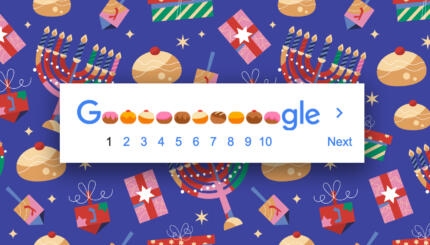For many years, I worked in the most special place I could imagine. A radical Beit Midrash (house of study) in Jerusalem- Memizrach Shemesh, the Social Action Beit Midrash, inspired by the traditions of Jews from Arab lands. At Memizrach Shemesh, we used Jewish texts, with a special emphasis on Sephardic and Mizrachi Rabbinic texts, as tools for awareness-raising and social change. We trained leaders, educators and activists in Israeli society with the perspective that good community workers need to learn before taking action. I directed Memizrach Shemesh’s Youth Leadership Department for a decade.
When is Hanukkah 2016? Click here to find out!
Towards the end of my time at the Beit Midrash, I came upon a beautiful text that summarized the purpose of my work. Rabbi Hayim Yosef David Azulay (Born in Hebron, active in North Africa and Italy 1727-1806) tells us that “Everyone in Israel got his or her part at Sinai, and each needs to make efforts to engage in the Torah so that they can bring to light their part, and this is something that can be done by no other…” We all have a responsibility to find our place in the Torah. As a Jewish educator, I want all Jews to feel like a welcome part of this Torah, to realize that the community is incomplete without their voice.
At Memizrach-Shemesh, I was at the center of an important issue, showing Israeli society the significant social, cultural, textual and religious voice of Sephardic and Mizrachi Jews in Israeli society. We were not only teaching texts many had not heard of, we were also offering a prism through which to view Jewish and Israeli life: a life where denominations were not needed and all were included, where honoring tradition and taking on the responsibility to make change could go hand in hand.
I relocated to the U.S. a year and a half ago with my family, and although I am no longer a part of Memizrach Shemesh, the spirit and mission has stayed with me. Looking around my new community I often wonder: How can I make change here, on my own, in this context? I want to scream out at injustices I see and read about. But at the same time, I must grapple with raising and supporting my family, teaching my children how to be mensches and readjusting to American life.
Often around Hanukkah at Memizrach Shemesh we would examine the disagreement between two of the great ancient rabbis Hillel and Shammai. They disagreed on how we should light the Hanukkia (Hanukkah menorah). The house of Shammai suggests we should light eight candles on the first night, then decrease the number of candles by one each night of Chanukah. Hillel believes we should light one candle on the first night, adding one candle every night until there are eight candles on the last night.
Tradition sided, as it often has, with Hillel instead of Shammai.
I see in the debate of my favorite rabbinic pair a metaphor for how we make change in these difficult times. And my interpretation of Rabbi Hillel’s approach has helped me reengage with a new Sephardic website for Hanukkah.
Starting off with a bright, hot light – almost a fire – the fully lit Hanukkia proposed by Shammai reminds us that sometimes we need to take bold or drastic measures when we come across injustice or suffering.
This may mean putting yourself at risk by camping out near a water source to ensure you can put out the fire if it spreads, speaking up when you see a racist act unfolding in front of you or walking out of a high school classroom with your fellow students when you feel frustrated and betrayed by election results. Like Shammai’s ‘fire’, these actions are strong, radical and shake up people’s awareness about the social issue at hand.
Hillel’s incremental light grows slowly, and little by little the beauty and strength of the light is sustained. This kind of social change might look like volunteering at a homeless shelter, raising awareness about a social issue or educating people about their rights.
Over time, though, this builds into the same bright light of Shammai’s first day, but not right away. Instead, it’s the result of time and focus, each small action eventually combining to make a light for all.
This Hanukkah season, Rabbi Hillel helped me find my way to light what I hope is the first candle of many. I created a resource guide, Sephardi Chanukah, for Jewish educators with sources, lesson plans, stories and recipes teachers can use to bring the Jewish texts and traditions of Sephardi and Mizrachi Jews to schools, synagogues and organizations in English-speaking Jewish communities.
As I learned at Memizrach Shemesh, there is often an answer in our Jewish texts. In Hillel’s discussion on how to light the candles, I found the inspiration to create a small light, Sephardi Chanukah. My hope is that it will grow brighter as more Jewish educators help their students bring to light their part of the Torah they received at Sinai, making our curricula, our classrooms and our communities more whole.
Hanukkah
Pronounced: KHAH-nuh-kah, also ha-new-KAH, an eight-day festival commemorating the Maccabees’ victory over the Greeks and subsequent rededication of the temple. Falls in the Hebrew month of Kislev, which usually corresponds with December.
Midrash
Pronounced: MIDD-rash, Origin: Hebrew, the process of interpretation by which the rabbis filled in “gaps” found in the Torah.
Sephardic
Pronounced: seh-FAR-dik, Origin: Hebrew, describing Jews descending from the Jews of Spain.
Torah
Pronunced: TORE-uh, Origin: Hebrew, the Five Books of Moses.



